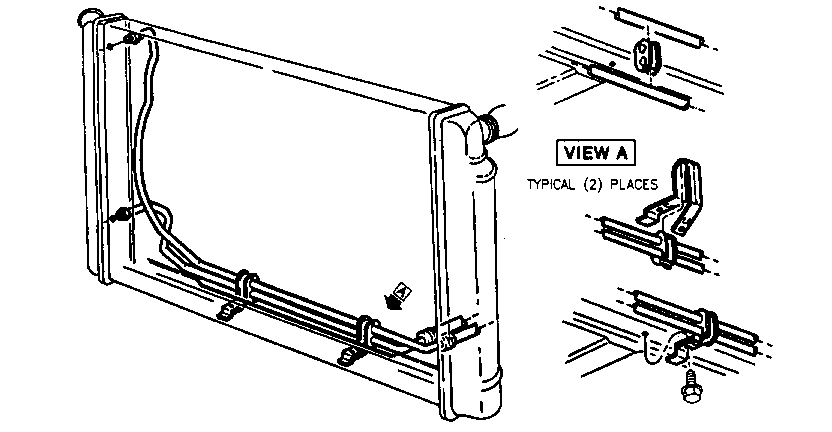SQUAWK/MOAN NOISE WHEN TCC IS APPLIED-INSTALL ISOLATION KIT

SUBJECT: SQUAWK/MOAN NOISE WHEN TCC APPLIES/ON DECELERATION AT APPROXIMATELY 1900 RPM - INSTALL NEW TRANSAXLE COOLER BRACKETS
MODELS/YEARS: 1991-92 NINETY EIGHT 1992 EIGHTY EIGHT
This bulletin cancels and supersedes Dealer Technical Bulletin 91-T-155A which should be discarded.
CONDITION: A squawk/moan noise is heard when the TCC applies or a moan noise is heard on deceleration at approximately 1900 rpm.
CAUSE: This condition could be caused by a ground out of the transaxle cooler pipes at the cooler pipe clips where they attach to the lower tie bar.
CORRECTION: To correct this condition, it will be necessary to install isolation kit, P/N 25614724 which is currently available from GMSPO. The isolation kit consists of two rubber grommets, two metal clips, and two screws.
1. Raise the vehicle to gain access to the cooler pipe clips attached to the lower tie bar. See the illustration.
2. For vehicles not equipped with Trailer Towing Option V92, unlatch both clips to release the cooler pipes. For vehicles equipped with V92, unlatch the right side clip only to release the cooler pipes.
3. For non-V92 vehicles remove clip attaching screws and clips. For vehicles with V92 remove the right side clip attaching screw and clip only.
4. Attach rubber grommets to cooler pipes in the same location as original clips.
5. Install metal clips over rubber grommets (see illustration).
6. Attach clip(s) to tie bar with screw(s) provided in the kit. Torque to 6 N-m (53 lb. in.)
7. Lower vehicle.
8. Discard any unused parts from the kit.

General Motors bulletins are intended for use by professional technicians, not a "do-it-yourselfer". They are written to inform those technicians of conditions that may occur on some vehicles, or to provide information that could assist in the proper service of a vehicle. Properly trained technicians have the equipment, tools, safety instructions and know-how to do a job properly and safely. If a condition is described, do not assume that the bulletin applies to your vehicle, or that your vehicle will have that condition. See a General Motors dealer servicing your brand of General Motors vehicle for information on whether your vehicle may benefit from the information.
